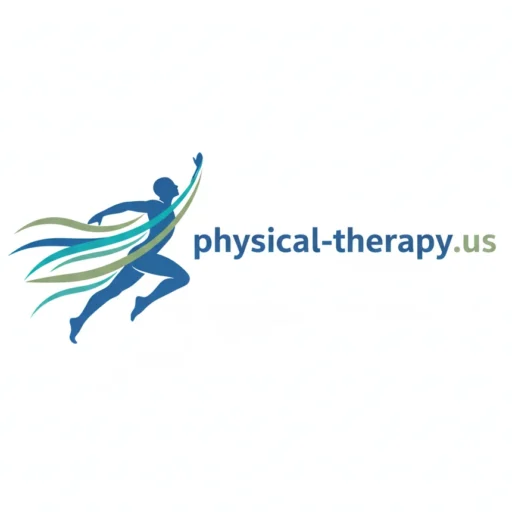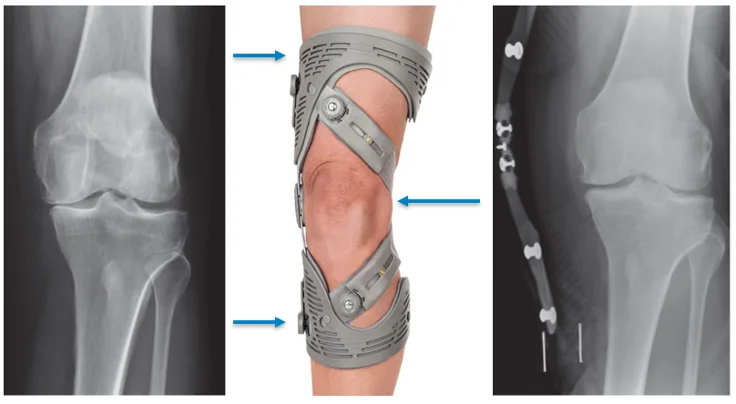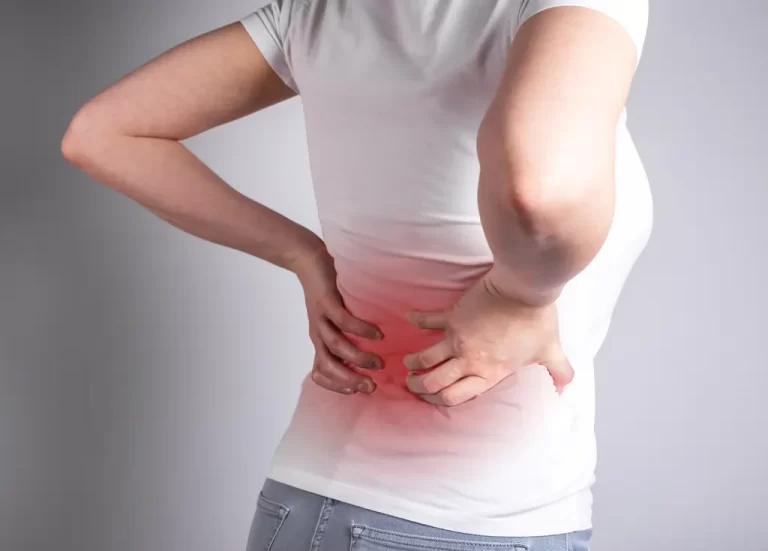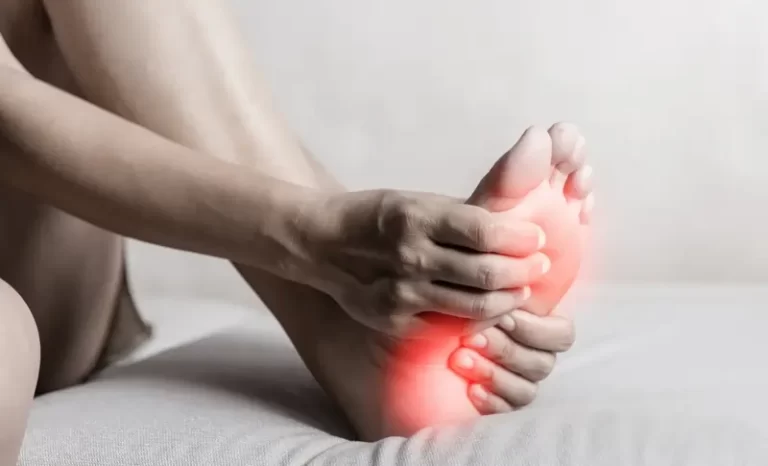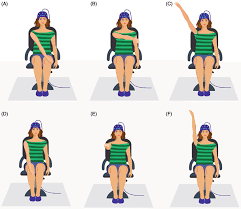Unloader Knee Brace for Osteoarthritis
Introduction:
Osteoarthritis is a common degenerative joint disease that can impact the knees. A knee unloader brace can improve stability and ease pain by lessening the strain on the injured region.
Customised brace is a successful nonsurgical treatment. A knee brace can help someone restore from surgery while also delaying a potential future procedure.
A Unloader Knee Brace: What Is It?
One kind of knee brace called an unloader knee brace is made to transfer weight away from a knee injury or affected region. As the term implies, pressure is transferred to the opposite, stronger side of the joint from the painful location, or “unloaded.”
They are a tried-and-true method of enhancing joint function and lowering joint pain. These side effects may also result in a decrease in the demand for painkillers. It’s crucial to remember that unloading knee braces doesn’t treat, delay, or reverse osteoarthritis or any other type of joint disease, even while they do increase comfort, and mobility, and reduce discomfort.
How do unloader knee braces work?
Unloading knee braces have to be manufactured specifically for each patient. They fit around the leg at the knee and provide some flexibility while limiting side-to-side movement of the joint. By applying pressure to the thigh bone in three different locations, the braces are intended to relieve the strain on the painful portion of the knee joint and cause the knee to bend away from it.
Many individuals are surprised by how soft each knee brace feels to the touch since they anticipate a stiff device that would secure the knee. However, the design is pleasant and not stiff because the unloading is accomplished using straps and a pulling mechanism. Users may customize the brace to their desired degree of comfort and resistance thanks to its design, which also enables the patient to use it to make small modifications on their own.
Uses Of Unloader Knee Brace:
An unloader brace may be used by people with osteoarthritis, specifically medial knee arthritis, for the following reasons:
- Pain relief: Pain and suffering can be reduced by redistributing the weight-bearing burden.
- Enhanced mobility: With the brace, a person may have a wider range of motion and more stable joints.
- Postponing surgery: Doctors may recommend the use of an unloader knee brace before considering surgery.
- Postoperative support: Following knee surgery, some patients may find that an unloader knee brace helps them heal.
- Activity-specific support: For extra protection and support, those participating in sports or other physically taxing activities may utilize unloader knee braces.
Indications Of Unloader Knee Brace:
Osteoarthritis, a painful illness that mostly affects the hands, knees, and hips, affects around 54 million Americans. Obesity has led to a rise in knee osteoarthritis in the United States.
People with medial compartment knee osteoarthritis, or arthritis affecting the interior part of the knee, are usually prescribed unloader knee braces. When walking, the knee may sway towards the inside of the leg in several situations due to knee instability.
To provide you extra stability, an unloader knee brace relieves pressure from the weak spot on your knee. Once more, this is especially beneficial if the opposing knee joint is comparatively healthy and able to support the weight.
Benefits Of Unloader Knee Brace:
The following are the primary advantages of using an unloader knee brace:
- Delay knee replacement surgery: An unloader knee brace can assist postpone surgery or reduce discomfort while you wait for surgery if you have unicompartmental osteoarthritis (just on one side).
- Enhance knee stability and pain following surgery: Following anterior cruciate ligament repair (ACLR), a brace can help lessen knee osteoarthritis pain.
- Reduce joint stress: To lessen knee stress, a brace can change the structure and mobility of the joint.
- Knee therapy: A brace may be useful for sportsmen undergoing knee rehabilitation.
It is often regarded as an affordable medicine that relieves pain without causing serious adverse effects.
Can It Help with Medial Compartment Knee Osteoarthritis?
The unloader knee brace’s ability to objectively aid patients with medial compartment knee osteoarthritis has been investigated by experts from the American Academy of Orthopaedic Surgeons (AAOS).
The American Academy of Orthopaedics and Orthopaedics (AAOS) suggests further study comparing a knee brace against a knee sleeve based on parameters such as knee discomfort, stiffness, self-reported functional capability, and physical performance.
How to Use a Unloader Knee Brace:
A person can check with a doctor to see if an unloader knee brace is right for them before wearing one. They may also guarantee that the brace fits correctly and offer advice on the best kind.
The manufacturer’s recommendations for the brace should be followed.
In general, they should make sure the hinges of the brace are in line with the knee joint. The straps should be tightly fastened without being overly tight.
A person should start by wearing the brace for brief periods as it may take some time to become used to it. As kids feel more at ease, they can then progressively extend the time.
Periodically check the brace for damage or wear indicators like loose hinges, frayed straps, or fractures. Along with making sure all the parts are in excellent operating order, one should clean the bracebyh the manufacturer’s instructions.
They should look for indications of pressure sores or irritation on the skin beneath and surrounding the brace. If problems continue, adjust the brace as needed or get in touch with a medical expert.
If a patient has more pain, swelling, or discomfort while using the unloader knee brace, a doctor can make changes or provide alternatives.
Risks and adverse effects:
For those with osteoarthritis, unloader knee braces can be quite beneficial, but there are some possible hazards and adverse consequences. These consist of:
- Improper fit: A brace that fits badly may cause pain, irritated skin, pressure sores, or worsening symptoms. Therefore, to make sure the brace is the right size and fit, a person should consult a healthcare provider.
- Muscle atrophy: Relying too much on an unloader knee brace may cause weakening or atrophy of the muscles. Maintaining muscular strength and mobility can be facilitated by combining the brace’s use with physical therapy and a supervised exercise regimen.
- Allergic reactions: In rare instances, people may experience an allergic response to the unloader knee brace’s components. If they have any symptoms of an allergic response, such as redness, itching, or swelling, they should seek advice from a medical expert.
What Is the Price of Unloader Knee Braces?
Unloader knee braces typically range in price from $400 to $900. You should verify with your plan provider since they may not always be covered by health insurance.
Medically essential durable medical equipment (DME) is covered by the majority of insurance plans, such as Medicare and Medicaid. Leg braces, including knee braces, are covered by Medicare Part B if your doctor prescribes them and they are medically required.
Unloader knee braces come in a variety of styles. If your physician or physical therapist recommends one, they will advise you on whether to purchase one or order a custom-made or custom-fit model.
You might need to have your brace professionally ordered from one of the manufacturers, depending on your situation. To ensure that the features and fit are ideal for your condition, the manufacturer will ask for information regarding the size and function of your knee.
What to ask a doctor:
When contemplating the use of an unloader knee brace for osteoarthritis, a patient might ask a doctor a number of questions.
Notable them are:
- Is an unloader knee brace appropriate for my knee osteoarthritis type and severity?
- What possible advantages and disadvantages may an unloader knee brace have?
- Which unloader knee brace type and style is best for me?
- How many hours a day should I wear the unloader knee brace?
- Could you recommend any particular physical treatment or exercise regimens?
- Do any symptoms or indicators suggest that I should stop wearing the unloader knee brace?
- Are there any more nonsurgical treatments for treating osteoarthritis in the knee?
Summary
Osteoarthritis unloader knee braces can improve mobility and quality of life by relieving pain and supporting the affected knee. They function by relieving pressure on the knee’s injured areas.
To find out if an unloader brace is right for them, people might speak with a doctor. A brace can be recommended by a doctor, who can also make sure it fits properly for maximum benefit.
FAQs
When should an unloader knee brace be worn?
A complete or partial knee replacement may be postponed or avoided with its help. Although it may be utilised for meniscal injuries or disorders that benefit from the decrease of stress via a single compartment of the knee, its primary usage is for unicompartmental knee osteoarthritis.
What is an osteoarthritis offloading knee brace?
For knee osteoarthritis that mostly affects one side of the knee joint, an unloader knee brace is a kind of brace that can offer stability, support, and pain alleviation. The purpose of this knee brace is to “unload” or shift pressure from one side of the joint to the other.
To what extent does the unloader knee brace work?
According to different research, patients who wore the brace for more than eight weeks saw increases in pain reduction; however, only 42% of them continued to wear the brace for an average of 2.7 years. In a follow-up research, the same individuals were visited again; none of them remained brace-wearing at age 11.
What is the recommended daily wear time for a knee brace?
Overarching suggestions. Wearing a knee brace for 2 to 4 hours at a time can offer adequate support and stability during the early phases of rehabilitation or after a knee injury. You might not need to wear your brace for as long as you think as your knee gets stronger and heals.
What drawbacks might a knee brace have?
The brace may cause chafing or discomfort when it rubs against the skin. For people who must wear the knee brace for extended periods of time—such as athletes who wear it throughout practices or games—this can be very troublesome.
What is the latest knee OA treatment?
In 2022, a pilot research was initiated by the University of Chicago Medicine on genicular artery embolization (GAE), a novel therapy intended to postpone or perhaps avoid knee replacement surgery. Inflammatory or compressive arteries that develop into the knee joint are sealed up during the surgery.
References
- Eustice, C. (2024, June 9). Unloader knee brace for osteoarthritis. Verywell Health. https://www.verywellhealth.com/what-is-an-unloader-knee-brace-2552051
- Higuera, V. (2023a, April 26). The stages of osteoarthritis of the knee. https://www.medicalnewstoday.com/articles/310579
- Team, W. (2024, November 11). Benefits of an unloader knee brace. Icarus Medical. https://icarusmedical.com/blog/benefits-of-an-unloader-knee-brace/
